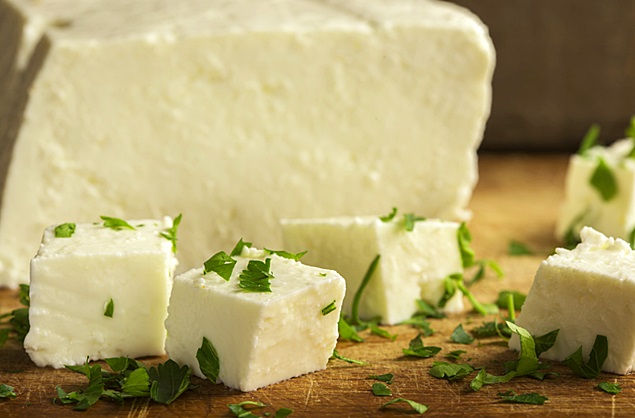
After reaching historically high levels in 2022, EU raw milk prices fell sharply in the first half of 2023, the latest specific analysis published by the European Commission reveals, but the market will stabilize.
Reduced margins for farmers
The price decline slowed in the summer and prices finally started to rise in Q4 2023. Average EU raw milk prices fell by September to 25% below the December 2022 peak (still 11% above 5-year average).
At the beginning of 2024, EU raw milk prices increased and stabilized at a level (above 46c/kg) still significantly above historical benchmarks (+15% compared to the 5-year average). In parallel, energy and fertilizer prices fell in 2023 and stabilized at a level well above the average prices of the last decade.
The decline in prices has slowed in the summer of heavy rains in some EU countries (eg pasture conditions have become exceptionally difficult in EI early 2024), weather conditions for fodder production and grazing appear favorable at the moment. Overall, stabilizing input and output prices could reduce margins for dairy farmers in 2024.
Milk production will increase
EU milk supplies remained stable in 2023 (+0.3% year-on-year), despite falling, but still relatively high, EU raw milk prices in the first three quarters of the year. Behind this stability, changes in raw milk supply remained very heterogeneous across EU countries. In some countries, raw milk supplies have decreased (eg IE, FR, IT).
In others, deliveries increased (eg BE, DE, PL), illustrating the impact of factors other than the price of raw milk (impact of weather, structural changes, etc.). In 2023, the EU dairy herd continued its long-term downward trend (-1.7% for the EU, eg DE and FR above this average decline).
On the other hand, favorable weather conditions and adequate feed availability and quality contributed to the increase in both milk production (+1.8%) and milk solids. Overall, availability of milk solids increased relatively more than EU raw milk supply (+0.7% for milk fat and +0.6% for milk protein).
In 2024, assuming normal weather conditions and raw milk prices still above historical levels, the upward trend in EU milk production (+0.9%) is assumed to counterbalance the decline in cow numbers (-0.5% ), leading to a slight increase in milk supply (+0.4%, including the increase due to the extra leap day).
Cheese production will increase
EU cheese production again remained the preferred option in milk processing in 2023 (+1.4%), benefiting from a slightly higher availability of milk fat. With competitive prices, EU cheese exports have grown considerably (+3.6% in volume), with an export value of over €8.13 billion (+5.3%).
On the other hand, cheese imports (mostly premium cheeses) were more affected by inflationary pressures and fell by 6.9%, down for the EU's two main partners: Great Britain and Switzerland (-5% and respectively -4%). Assuming stable EU milk supplies, EU cheese production could increase further (+0.7%) in 2024.
EU cheese exports may also continue to grow, albeit at a slower pace (+2.5%) due to a slow recovery in demand in some major importing markets. Domestic use of cheese may increase somewhat (+0.4%) due to the weakening outlook for food inflation and reduced processing costs (eg lower energy costs).
EU whey production continued the growth trend of recent years in 2023 (+1.2%). This growth was supported by EU exports (+4.2%), while EU domestic use fell (-0.3%).
Exports will drive production growth
In 2024, the stable EU milk stock could still allow production to increase (+0.9%), again driven by increased EU exports (+2.5%), while domestic use is likely to remain stable .
Although EU SMP production fell considerably in 2023 (-5.4%), exports recovered from the decline of previous years and increased by 10%. This strong growth was mainly due to higher demand from Algeria and other countries in North Africa, Asia and the Middle East. At the same time, household consumption decreased (-7.7%), including the processing of e.g. for fat-filled powders.
EU WMP exports recovered (+12%) in 2023, mainly due to a four-fold increase in EU exports to Algeria.
Due to these difficulties, WMP exports are unlikely to repeat the growth of 2023 and may rather decline in 2024 (-1%). In 2024, SMP production could remain stable, while exports could increase, but at a much lower rate (+1%).
Price development and processing use of milk powder could also be affected by the current increase in cocoa prices, as powders are important ingredients used in the production of chocolate and related confectionery products. Therefore, household use of SMP in 2024 could decline at a similar rate as in 2023 (-5.3%), and household use of WMP could also decline (-2% vs. -5% in 2023).
Butter is the star of the moment
EU butter production increased in 2023 by around 1.5% as EU prices became more competitive (also compared to other fats) and processing demand remained strong (e.g. in bakery).
EU exports increased to all major export destinations (+15%) and export value reached a record €1.61 billion. Maintaining a similar pace is unlikely in 2024, but EU butter export growth could remain positive (+1.5%), assuming competitive EU export prices.
At the same time, domestic consumption in the EU is likely to remain strong but stable (+0.1%). The production of fresh dairy products increased more than expected in 2023, especially for cream (+1.5%) but also for drinking milk (+0.3%).
EU exports continued to decline (-5.5%) due to lower demand from China, transferring additional volumes to the EU domestic market and thus also supporting the increase in EU domestic use (+0.8%). In 2024, EU consumption is likely to return to the downward trend of the past few years, and EU exports may fall further due to persistently weak global demand.
To respond to these negative demand factors, EU production of fresh dairy products could fall to a level comparable to 2022 (-0.8%). Among fresh dairy products, production of cream and yogurt could continue to grow, supported by strong domestic demand, while production of drinking milk is likely to decline. (Photo: Dreamstime)




